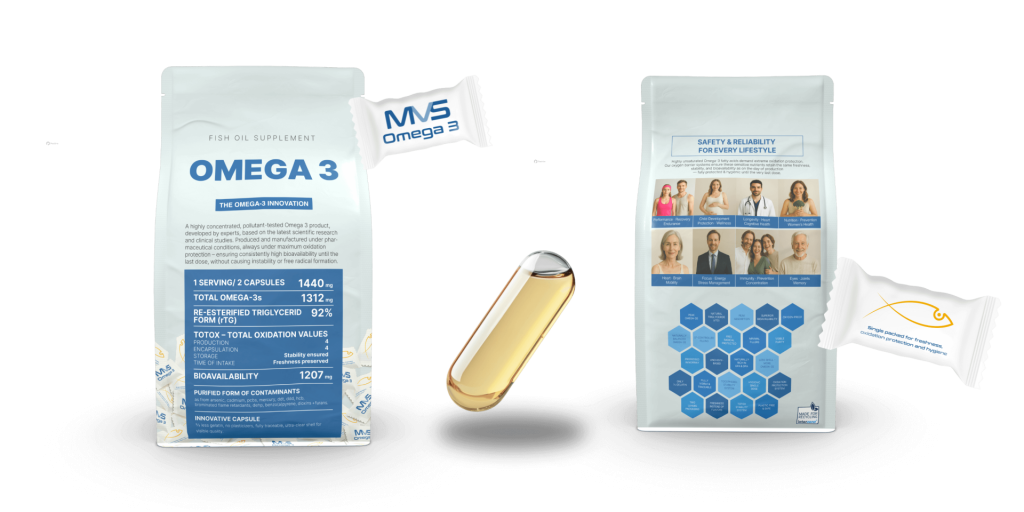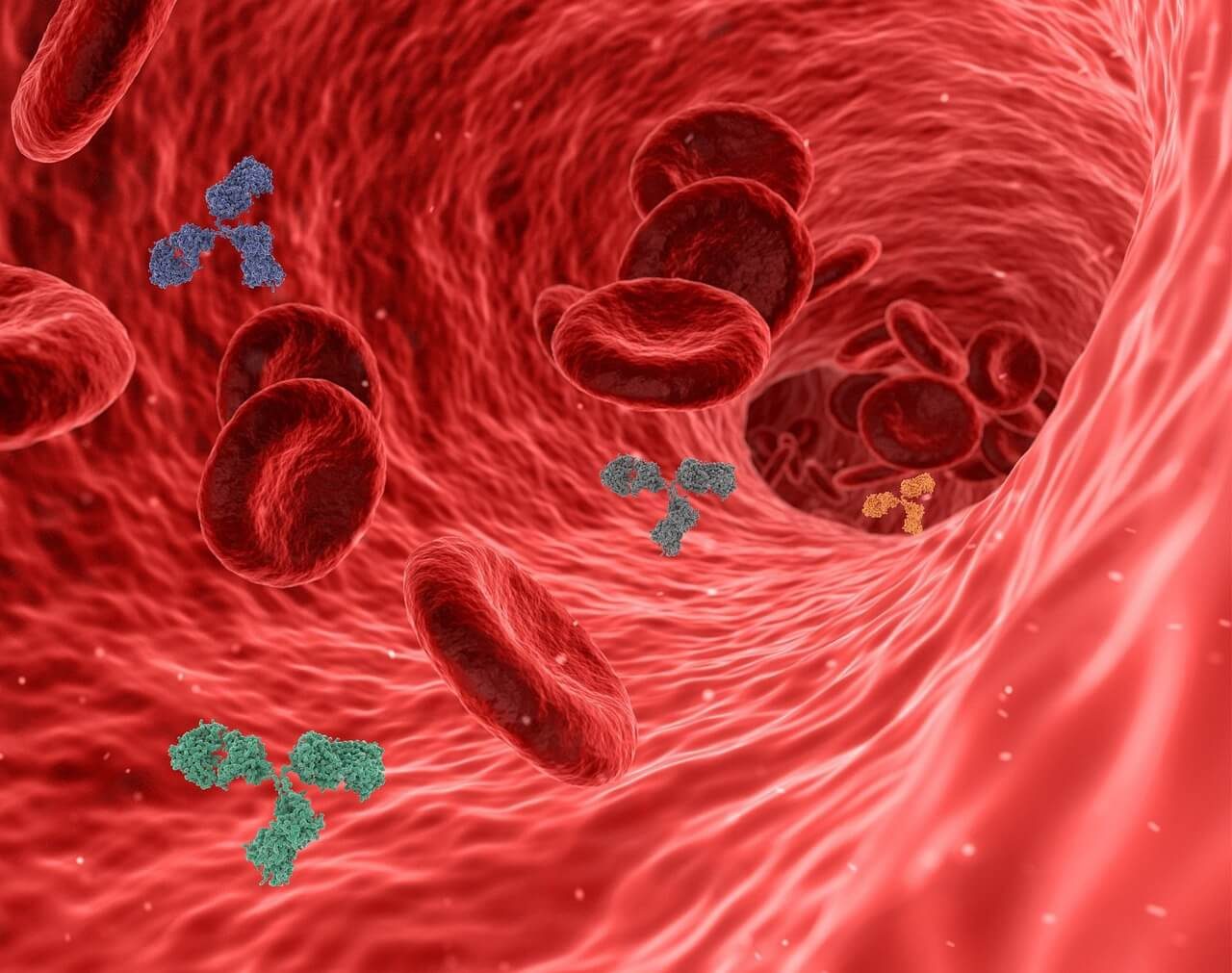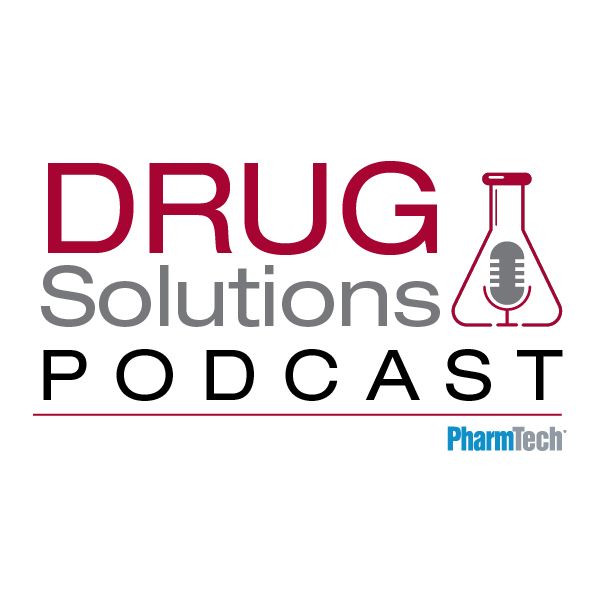October 8, 2025
How Omega-3 Fights Inflammation: Introduction
Omega-3 long-chain polyunsaturated fatty acids — EPA (eicosapentaenoic acid) and DHA (docosahexaenoic acid) — influence inflammation at multiple, complementary levels: from the eicosanoid balance and gene transcription to pro-resolving lipid mediator signaling, immune-cell behavior, and the gut–immune axis. Together, these mechanisms help calm excessive inflammation while supporting healthy immune defense, which is why omega-3s are studied across arthritis, IBD, cardiometabolic disease, and neuroinflamma…
- Shifting Eicosanoid Balance Away from Pro-inflammatory Signals: EPA and DHA get incorporated into cell membranes and compete with arachidonic acid (AA) for cyclooxygenase and lipoxygenase enzymes. This shifts the lipid mediator profile away from AA-derived prostaglandins/leukotrienes (often pro-inflammatory) toward less-inflammatory or pro-resolving derivatives of EPA/DHA, contributing to a lower inflammatory tone.
- Recent reviews in atherosclerosis and lipid biology reiterate that a higher AA: EPA balance favors pro-inflammatory eicosanoids, whereas greater EPA availability promotes resolving lipid mediators.
- Producing Specialized Pro-Resolving Mediators (SPMs): EPA and DHA are substrates for resolvins, protectins, and maresins — collectively called specialized pro-resolving mediators (SPMs). These mediators do not suppress immunity; they actively resolve inflammation, helping stop neutrophil over-recruitment, enhance clearance of apoptotic cells, and promote tissue repair. A 2024 expert consensus (Serhan et al.) and recent reviews emphasize SPMs as the biochemical basis for omega-3’s resolution biology and a next chapter for fish-oil science.
- Regulating Immune-Cell Function and Inflammatory Signaling: Omega-3s modulate macrophages, neutrophils, and T cells, shifting phenotypes toward pro-resolving/anti-inflammatory states. Mechanistically, they engage PPARs and certain GPCRs (e.g., GPR120/FFAR4) and can blunt NF-κB and inflammasome activation — key hubs that drive cytokine expression. A 2024 mechanistic review summarizes these receptor- and transcription-factor-level actions with contemporary evidence.
- Lowering Circulating Pro-inflammatory Cytokines (Clinical Evidence): Beyond mechanisms, clinical data show changes in inflammatory biomarkers. A 2024 meta-analysis of 33 trials (n≈2,000) reported that omega-3 supplementation significantly reduced IL-6 and TNF-α, with supportive (graded) evidence quality for IL-6 and directional benefits for other markers (e.g., CRP). Broader umbrella reviews similarly report improvements in CRP/TNF-α/IL-6 in diverse adult populations.
- Clarifying the “Antioxidant” Question: Omega-3s are not direct free-radical scavengers the way classical antioxidants are. Instead, they support oxidative balance indirectly by dampening upstream inflammatory signaling and generating SPMs, which reduces oxidative stress at the tissue level. Contemporary reviews advise this more precise wording in place of “omega-3s are antioxidants.”
- Modulating Nuclear Transcription Factors: EPA/DHA-derived signals can down-regulate NF-κB–driven genes and activate PPARs, shifting gene expression away from pro-inflammatory cytokines and toward pro-resolving/anti-inflammatory programs. These effects align with observed reductions in IL-6/TNF-α in clinical studies.
- Supporting a Healthier Gut–Immune Axis: Emerging evidence links omega-3 status to the composition and function of the gut microbiota, often showing increases in beneficial taxa (e.g., Bifidobacterium, Akkermansia) and higher short-chain fatty acids — changes associated with lower gut and systemic inflammation. Recent 2025 reviews highlight omega-3–microbiome crosstalk and its relevance to inflammatory conditions.
Real-World Context: What to Expect Clinically
- Systemic biomarkers: Modest but significant reductions in IL-6 and TNF-α across mixed populations and conditions.
- Resolution biology: Greater emphasis in 2024–2025 literature on SPMs as a measurable correlate of resolution; enriched marine oils can raise peripheral SPMs, linking intake to resolution pathways.
- Disease-specific outcomes: Effects can vary by condition, dose, baseline diet, and formulation. Evidence is strongest for triglyceride lowering and endothelial function, with growing (but condition-specific) data for clinical inflammatory endpoints.
Summary: How omega-3 fights inflammation
Omega-3 fatty acids (EPA and DHA) help the body resolve inflammation naturally by shifting the balance of inflammatory molecules, lowering cytokines like IL-6 and TNF-α, and producing specialized pro-resolving mediators (SPMs). These actions calm chronic inflammation, support immune balance, and protect tissues throughout the body — promoting long-term cardiovascular, metabolic, and cellular health.
{
“@context”: “https://schema.org”,
“@type”: “FAQPage”,
“mainEntity”: [
{
“@type”: “Question”,
“name”: “Summary: How omega-3 fights inflammation”,
“acceptedAnswer”: {
“@type”: “Answer”,
“text”: ”
Omega-3 fatty acids (EPA and DHA) help the body resolve inflammation naturally by shifting the balance of inflammatory molecules, lowering cytokines like IL-6 and TNF-α, and producing specialized pro-resolving mediators (SPMs). These actions calm chronic inflammation, support immune balance, and protect tissues throughout the body — promoting long-term cardiovascular, metabolic, and cellular health.
”
}
}
]
}
Product Quality Matters: Bioavailability and Oxidation Protection
For these mechanisms to translate into benefits, omega-3s must reach tissues fresh and bioavailable. Omega-3s are chemically delicate; oxidation degrades efficacy and can generate irritant by-products.
That’s why your MVS Omega-3 innovations (high-purity rTG form, oxidation protected, argon protection, double-sealed capsules) are meaningful — they help preserve integrity so EPA/DHA remain effective through the last capsule. (Based on your internal product documents.)
MVS Pharma’s Innovation – MVS Omega-3 The New Golden Standard
At MVS Pharma, we are addressing the critical shortcomings of today’s Omega-3 supplements by developing a solution that meets the highest standards of purity, freshness, and absorption.

- Oxidation Resistant: Freshness maintained from first capsule to last — proven by strict TOTOX control.
- Highest purity → Our omega-3 oil is manufactured in accordance with strict standards and with pharmaceutical-grade-like care, purified using a sophisticated process.
- Superior absorption: Advanced re-esterified triglyceride (rTG) form.
- Clean & safe: Free from heavy metals, PCBs, microplastics.
- Sustainability: Responsibly sourced small fish, fully traceable.
- German manufacturing: GMP & ISO-certified conditions.
- Double protection packaging: Each capsule is sealed individually, then stored inside protective pouches for unmatched stability.
MVS Omega-3 sets a new benchmark in supplement quality — no shortcuts, no compromises.
FAQs
How exactly does Omega-3 help reduce inflammation in the body?
How exactly does Omega-3 help reduce inflammation in the body?
Omega-3 fatty acids — particularly EPA and DHA — influence inflammation on several levels. They shift the body’s eicosanoid balance away from pro-inflammatory molecules, promote the production of specialized pro-resolving mediators (SPMs), and modulate immune cell activity, helping the body resolve inflammation naturally rather than simply suppressing it.
{
“@context”: “https://schema.org”,
“@type”: “FAQPage”,
“mainEntity”: [
{
“@type”: “Question”,
“name”: “How exactly does Omega-3 help reduce inflammation in the body?”,
“acceptedAnswer”: {
“@type”: “Answer”,
“text”: ”
Omega-3 fatty acids — particularly EPA and DHA — influence inflammation on several levels. They shift the body’s eicosanoid balance away from pro-inflammatory molecules, promote the production of specialized pro-resolving mediators (SPMs), and modulate immune cell activity, helping the body resolve inflammation naturally rather than simply suppressing it.
”
}
}
]
}
What are Specialized Pro-Resolving Mediators (SPMs), and why are they important?
What are Specialized Pro-Resolving Mediators (SPMs), and why are they important?
SPMs are powerful bioactive compounds derived from EPA and DHA that help the body end inflammation safely. They promote tissue repair, reduce excessive immune activity, and support healing — representing a new understanding of how Omega-3s actively resolve inflammation rather than block it.
{
“@context”: “https://schema.org”,
“@type”: “FAQPage”,
“mainEntity”: [
{
“@type”: “Question”,
“name”: “What are Specialized Pro-Resolving Mediators (SPMs), and why are they important?”,
“acceptedAnswer”: {
“@type”: “Answer”,
“text”: ”
SPMs are powerful bioactive compounds derived from EPA and DHA that help the body end inflammation safely. They promote tissue repair, reduce excessive immune activity, and support healing — representing a new understanding of how Omega-3s actively resolve inflammation rather than block it.
”
}
}
]
}
Can Omega-3s really lower inflammatory markers like CRP, IL-6, or TNF-α?
Can Omega-3s really lower inflammatory markers like CRP, IL-6, or TNF-α?
Yes. A 2024 meta-analysis of 33 clinical trials found that Omega-3 supplementation significantly reduced interleukin-6 (IL-6) and tumor necrosis factor-alpha (TNF-α) levels, both key markers of systemic inflammation. Broader reviews confirm consistent, measurable reductions in inflammatory cytokines in adults across different conditions.
{
“@context”: “https://schema.org”,
“@type”: “FAQPage”,
“mainEntity”: [
{
“@type”: “Question”,
“name”: “Can Omega-3s really lower inflammatory markers like CRP, IL-6, or TNF-α?”,
“acceptedAnswer”: {
“@type”: “Answer”,
“text”: ”
Yes. A 2024 meta-analysis of 33 clinical trials found that Omega-3 supplementation significantly reduced interleukin-6 (IL-6) and tumor necrosis factor-alpha (TNF-α) levels, both key markers of systemic inflammation. Broader reviews confirm consistent, measurable reductions in inflammatory cytokines in adults across different conditions.
”
}
}
]
}
Are Omega-3s antioxidants?
Are Omega-3s antioxidants?
Not directly. Omega-3s don’t neutralize free radicals like classic antioxidants do. Instead, they reduce oxidative stress indirectly by calming inflammation, supporting cell membrane stability, and enhancing the body’s natural antioxidant responses — leading to a healthier redox balance overall.
{
“@context”: “https://schema.org”,
“@type”: “FAQPage”,
“mainEntity”: [
{
“@type”: “Question”,
“name”: “Are Omega-3s antioxidants?”,
“acceptedAnswer”: {
“@type”: “Answer”,
“text”: ”
Not directly. Omega-3s don’t neutralize free radicals like classic antioxidants do. Instead, they reduce oxidative stress indirectly by calming inflammation, supporting cell membrane stability, and enhancing the body’s natural antioxidant responses — leading to a healthier redox balance overall.
”
}
}
]
}
What role does Omega-3 play in gut health and inflammation?
What role does Omega-3 play in gut health and inflammation?
Emerging 2025 research shows that Omega-3s positively affect the gut microbiome, increasing beneficial bacteria such as Bifidobacterium and Akkermansia while reducing harmful strains. This supports gut barrier integrity and lowers systemic inflammation, illustrating how Omega-3s contribute to both digestive and immune health.
{
“@context”: “https://schema.org”,
“@type”: “FAQPage”,
“mainEntity”: [
{
“@type”: “Question”,
“name”: “What role does Omega-3 play in gut health and inflammation?”,
“acceptedAnswer”: {
“@type”: “Answer”,
“text”: ”
Emerging 2025 research shows that Omega-3s positively affect the gut microbiome, increasing beneficial bacteria such as Bifidobacterium and Akkermansia while reducing harmful strains. This supports gut barrier integrity and lowers systemic inflammation, illustrating how Omega-3s contribute to both digestive and immune health.
”
}
}
]
}
How long does it take to see the anti-inflammatory benefits of Omega-3 supplementation?
How long does it take to see the anti-inflammatory benefits of Omega-3 supplementation?
Most studies report noticeable improvements in inflammation markers and symptoms after 8–12 weeks of consistent supplementation. The timeline can vary depending on factors like dosage, formulation, and baseline diet — but oxidation-protected, highly bioavailable Omega-3s (like MVS Omega-3) tend to produce more consistent results.
{
“@context”: “https://schema.org”,
“@type”: “FAQPage”,
“mainEntity”: [
{
“@type”: “Question”,
“name”: “How long does it take to see the anti-inflammatory benefits of Omega-3 supplementation?”,
“acceptedAnswer”: {
“@type”: “Answer”,
“text”: ”
Most studies report noticeable improvements in inflammation markers and symptoms after 8–12 weeks of consistent supplementation. The timeline can vary depending on factors like dosage, formulation, and baseline diet — but oxidation-protected, highly bioavailable Omega-3s (like MVS Omega-3) tend to produce more consistent results.
”
}
}
]
}
Why does product quality matter so much when it comes to Omega-3 and inflammation?
Why does product quality matter so much when it comes to Omega-3 and inflammation?
Omega-3s are delicate and easily oxidized, which can destroy their anti-inflammatory potential. MVS Omega-3 safeguards stability and efficacy with 92% purity in natural re-triglyceride (rTG) form, a TOTOX value of 4, argon protection, and double-sealed capsules — ensuring every dose delivers fresh, bioavailable EPA and DHA that truly work.
{
“@context”: “https://schema.org”,
“@type”: “FAQPage”,
“mainEntity”: [
{
“@type”: “Question”,
“name”: “Why does product quality matter so much when it comes to Omega-3 and inflammation?”,
“acceptedAnswer”: {
“@type”: “Answer”,
“text”: ”
Omega-3s are delicate and easily oxidized, which can destroy their anti-inflammatory potential. MVS Omega-3 safeguards stability and efficacy with 92% purity in natural re-triglyceride (rTG) form, a TOTOX value of 4, argon protection, and double-sealed capsules — ensuring every dose delivers fresh, bioavailable EPA and DHA that truly work.
”
}
}
]
}
What makes MVS Omega-3 different?
What makes MVS Omega-3 different?
It offers oxidation resistance, superior absorption in rTG form, full safety testing, and double protection packaging — ensuring purity and potency from production to consumption.
{
“@context”: “https://schema.org”,
“@type”: “FAQPage”,
“mainEntity”: [
{
“@type”: “Question”,
“name”: “What makes MVS Omega-3 different?”,
“acceptedAnswer”: {
“@type”: “Answer”,
“text”: ”
It offers oxidation resistance, superior absorption in rTG form, full safety testing, and double protection packaging — ensuring purity and potency from production to consumption.
”
}
}
]
}
Disclaimer: As a service to our readers, MVS Pharma GmbH publishing provides access to our library of archived content in our blog. Please note the date of the last review or update on all articles. No content on this site should ever be used as a substitute for direct medical advice from your doctor or other qualified clinician.
Sources:
- Inflammation resolution & SPMs (consensus/reviews): Serhan et al., 2024 (FASEB); narrative and focused reviews on SPMs and future of fish-oil/SPM therapeutics.
- Eicosanoid balance (AA vs EPA): Atherosclerosis/ATVB reviews on lipid mediator balance and a 2025 eicosanoid-pathway overview.
- Cytokine reduction (clinical): 2024 meta-analysis (IL-6/TNF-α) and umbrella meta-analysis on CRP/TNF-α/IL-6.
- Mechanisms (NF-κB, PPARs, GPCRs): Mechanistic review, 2024.
- Gut–microbiome link: 2025 open-access review and 2025 CVD-focused review.
- SPMs in humans (biomarker evidence): Increased peripheral SPMs with enriched marine oil.
The post How Omega-3 Fights Inflammation Naturally — Latest 2025 Research Explained appeared first on MVS Pharma.











Parents who focus on Teenage Health often notice positive changes in their child’s mood, performance, and general behavior. Consistency, love, and understanding are key ingredients to a nurturing upbringing. Many challenges in Teenage Health can be solved through education and parental involvement. Providing the right resources and emotional support can make a world of difference for every child’s progress.